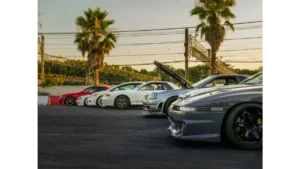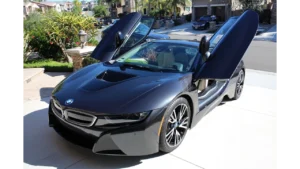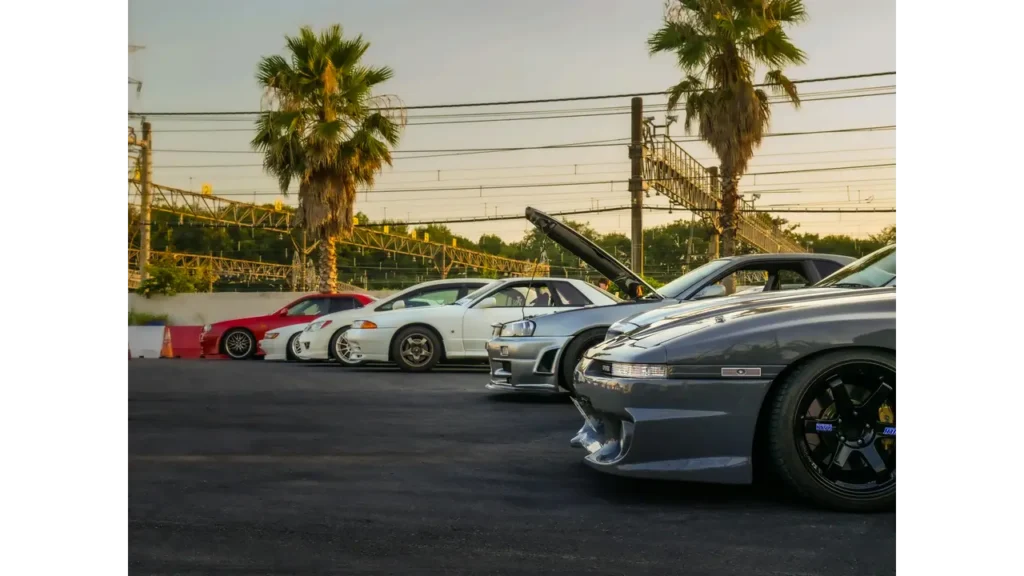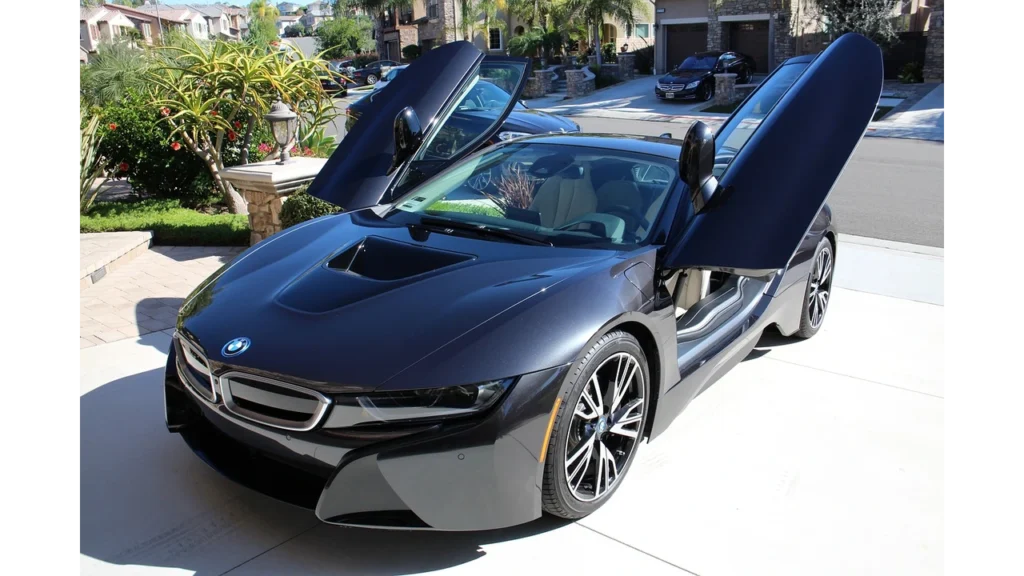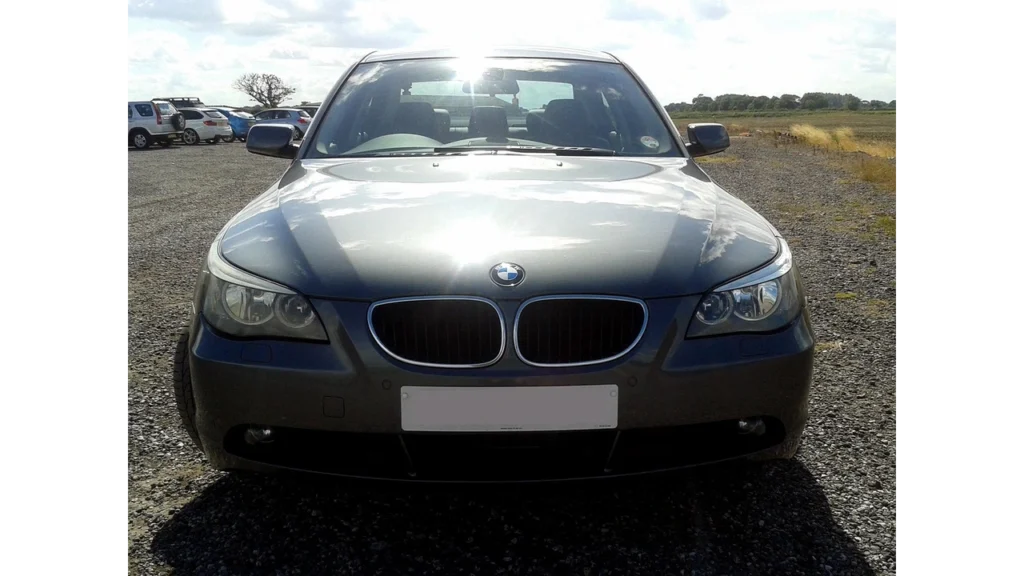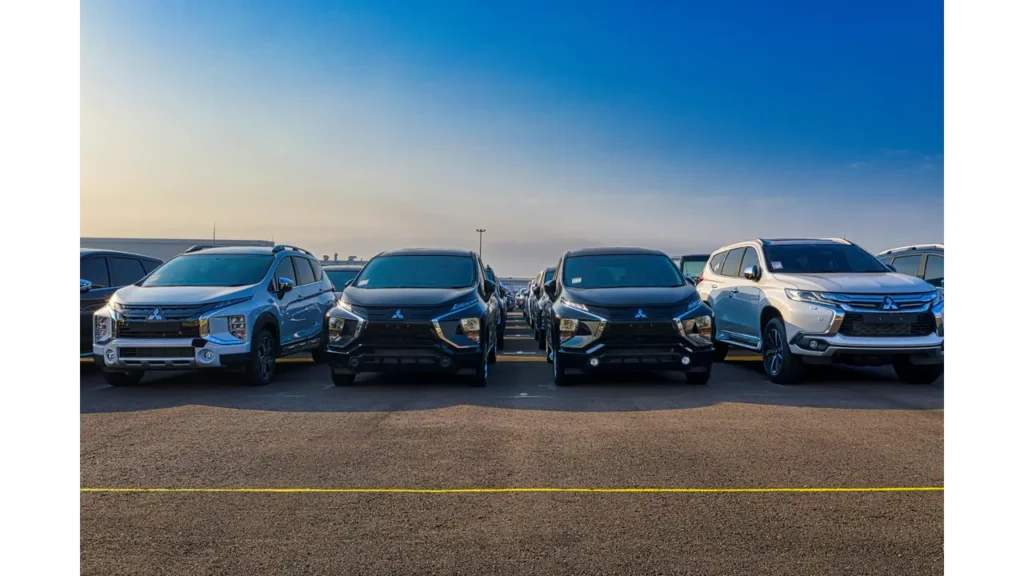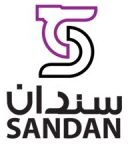Introduction
The used car market in Oman in 2025 runs on clear rules, steady running costs, and a wide pipeline of inventory from local trade-ins and GCC inflows. Marketplaces surface thousands of listings each week, while integrated auto hubs gather inspection lanes, workshops, insurers, and eTraffic facilitation in one district to complete transactions in a single sequence. Royal Oman Police governs registration and transfer through eTraffic. Oman Customs sets the documentation standard for inbound vehicles, including the export paperwork now expected for GCC-sourced cars. The Financial Services Authority oversees motor insurance conduct and the unified policy framework that underwrites legally required third-party liability. Banks supply reducing-balance finance, and their EMI ladders shape realistic budgets for sedans, crossovers, pickups, and a growing EV niche.
Price discovery reflects this web of entities. Listing prices act as a starting point; inspection outcomes, service history, color and trim preferences, and days-on-market signals compress that headline number toward a clearing price. Fuel price caps stabilize monthly operating costs, which nudges commuters toward efficient sedans and compact crossovers. Seasonal behavior matters as well: festival promotions, school-term timing, and summer logistics to Dhofar shift viewing windows and delivery slots. Importers respond to documentation rules and lead times, which can tighten or loosen specific model bands.
Confidence rises when the predicates line up: fines cleared, inspection passed, insurance schedule mirrors the VIN and named owner, and the transfer window is met on time. The following sections provide a fast snapshot of the 2025 landscape and then open the system to show how supply, regulation, and transaction rails connect inside Oman’s used car economy.
Key Takeaways / TLDR
- eTraffic controls transfer and renewal; time-boxed acceptance makes or breaks private sales.
- Import documentation standards for GCC inflows influence price bands and delivery lead times.
- Fuel caps anchor running-cost math, favoring efficient sedans and compact SUVs.
- Insurers follow unified wording; third-party liability is mandatory, comprehensive optional.
- Integrated auto hubs compress inspection, insurance, and transfer into a same-day chain.
- Listing price, inspection status, and days-on-market together predict the true clearing price.
Table of Contents
Snapshot 2025 (Market Size, Rules, Money Signals)
Market activity remains broad-based, with dense listing clusters in Muscat and steady churn in Sohar, Nizwa, and Salalah. Japanese and Korean nameplates dominate the 3–6-year segment, while recent growth in Chinese brands on the new-car side begins to shape future used supply. Color and spec preferences continue to affect liquidity; neutral shades with standard safety tech clear faster than niche hues or heavy cosmetic modifications.
Policy signals frame transactions. Royal Oman Police operates eTraffic as the canonical record for vehicles and owners. Private sales depend on a successful roadworthiness inspection, clean fines, a valid insurance policy in the buyer’s name, and authentication of the transfer within the designated time window. Miss the window and the sale reverts, regardless of verbal agreement. Oman Customs remains the gatekeeper for imported vehicles; cars moving from nearby GCC markets require export documentation from the origin, and any mismatch between paperwork and VIN results in delays at the border and during registration.
Money signals are equally clear. Fuel prices are regulated with monthly caps, keeping commuter costs predictable and making TCO comparisons between sedan and crossover segments straightforward. Insurance pricing follows regulator guidance; third-party liability sets the legal floor, while comprehensive with agency repair is commonly chosen for late-model vehicles with finance. Banks publish EMI calculators that translate price bands into monthly obligations across typical tenures.
Buyer and seller sentiment tracks two practical metrics: inspection pass rates and days-on-market. Vehicles that pass inspection on the first attempt and present a clean, verifiable service record trade quickly near the ask. Units with tint or lighting issues, brake imbalance, or aged tires linger, incur re-test fees, and face larger negotiation steps. Seasonality still matters. Pre-Ramadan and back-to-school months pull forward decision making, and the Khareef season in Dhofar temporarily shifts regional availability and transport timing.
How the Used Car Economy Works in Oman (Entities & Flows)
The market runs on a chain of entities with predefined roles. Marketplaces publish supply and connect buyers to sellers. Integrated hubs concentrate the work: pre-inspection to catch easy faults, formal inspection to record pass or fail, nearby parts and workshop bays to resolve defects, on-site insurance desks to bind policies, and service counters to complete eTraffic actions. Royal Oman Police maintains the registry and enforces predicates: fines must be settled, a valid ID must match records, an inspection pass must exist when required, and transfer acceptance must arrive inside the time box. The Financial Services Authority monitors insurer conduct and policy wording; policies must display the correct chassis number and named owner. Oman Customs vets imports using export documents and conformity to Omani standards before the first local inspection.
Two primary flows dominate. A domestic used purchase begins with a viewing and a pre-inspection, followed by a formal lane test. If the vehicle passes, insurance binds in the buyer’s name. The seller initiates eTraffic transfer, and the buyer authenticates within the platform window. A clean record yields an updated Mulkiya and, if requested, new plates. A GCC import follows a longer sequence: source-market export document, transport and customs valuation, conformity work for lighting and tint, local inspection, insurance issuance, and first registration.
Finance weaves through both paths. Banks assess income and loan-to-value, then return an EMI schedule that governs trim choice and negotiation posture. Insurance levers—repair network, deductible, territorial scope—interact with finance conditions when lenders require comprehensive coverage for specific vehicle ages. Data integrity ties everything together. A single typo in the VIN, a name mismatch between ID and policy, or an overdue fine will stall the chain until corrected.
When entities align, friction falls. The market clears near true value, transaction time compresses, and confidence improves across segments from compact sedans to diesel pickups and EV runabouts.
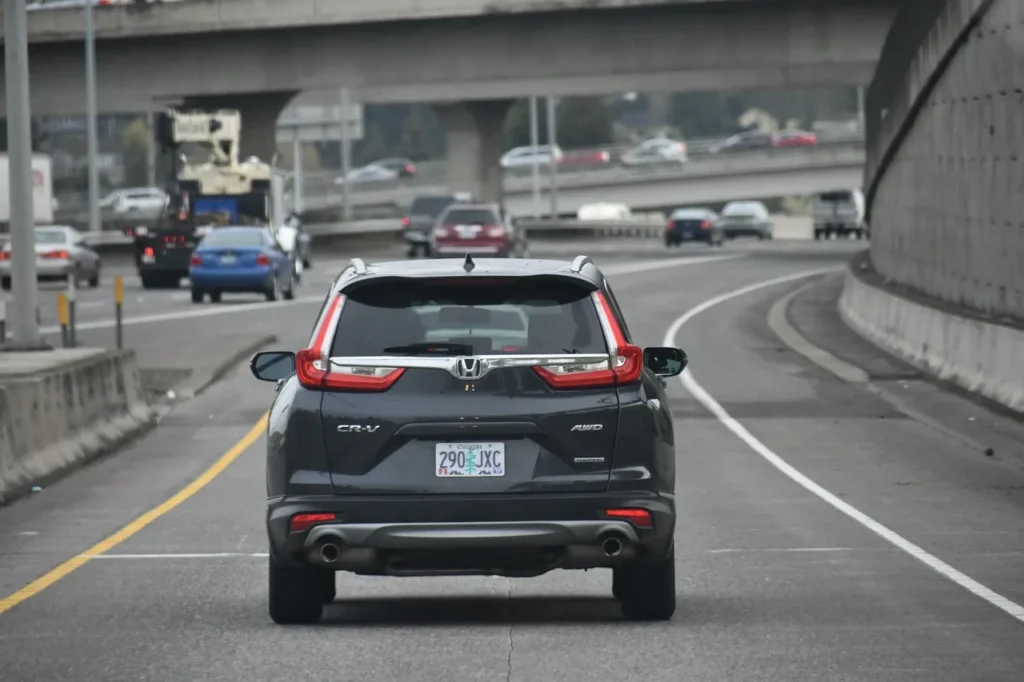
Price Bands by Segment (Sedan, Crossover/SUV, Pickup, EV)
Used-car pricing in Oman clusters by body type and use case. Compact and midsize sedans form the entry lane, where mileage, transmission type, and service records create the widest spreads. Clean history with dealership stamps and accident-free panels commands a tighter negotiation gap, while heavy tint, non-approved lighting, and tired tires widen the discount from list to clearing price. Popular Japanese and Korean sedans hold value through parts availability and predictable maintenance, while fleet-saturated trims show softer demand once odometers pass high five figures.
Crossovers and midsize SUVs maintain a premium due to seating height, family practicality, and weekend travel. Four-wheel-drive hardware, tow packages, panoramic roofs, and advanced driver assistance systems add discrete price steps. Specification alignment matters. GCC-spec cooling and safety equipment support liquidity; imports with non-compliant lighting or unusual option mixes face longer days-on-market until conformity work is completed.
Pickups split along drivetrain and payload needs. Single-cab diesel units priced for trade buyers move on durability signals, whereas double-cab lifestyle models trade on appearance packages, infotainment, and off-road kits. Aftermarket lifts without certification suppress price; professionally documented upgrades hold attention.
EVs form a small but growing niche. Battery state of health, remaining warranty, DC fast-charging capability, and onboard charger speed dominate valuation. Real-world range claims are discounted without recent diagnostic reports. Fleet ex-lease EVs with balanced charging histories and original high-voltage components clear faster than units with replaced modules and sparse paperwork.
Color and trim create micro-adjusters across segments. Neutral tones, fabric-free cabins in hotter regions, and factory infotainment with Arabic language support push transactions toward the ask. Seasonal timing still moves the needle. Pre-Ramadan promotions, back-to-school shifts, and Khareef travel windows alter viewing patterns and delivery slots, nudging specific models up or down for short stretches. The common thread is proof. Verified service records, recent inspection passes, and alignment between VIN, invoice, and insurance schedule consistently reduce negotiation spread and cut days-to-sale.
Total Cost of Ownership at Oman Fuel Caps
Total cost of ownership converts price talk into monthly reality. The stack contains fuel, insurance, maintenance, tires, depreciation, and, when applicable, bank EMI. With fuel prices capped monthly, segment comparisons become tractable. A commuter profile can be modeled as: monthly fuel = cap-unit-price × average consumption × distance. Sedans with smaller displacement typically show the lowest fuel line; compact crossovers follow closely, while body-on-frame SUVs and pickups sit higher due to weight and aerodynamics.
Insurance forms the legal floor and a comfort layer. Third-party liability satisfies road-use requirements. Comprehensive adds own-damage cover and often agency repair for vehicles within an age window. No-claim discounts reduce the premium after claim-free terms. Buyers planning a switch from comprehensive to third-party at midlife should factor this into a two-stage TCO plan, because the premium drop later can offset higher early depreciation.
Maintenance splits by platform. Sedans and compact crossovers consume consumables at predictable intervals: oil and filters, brake pads, coolant, and belts. SUVs and pickups add larger tire sizes and heavier brake components. EVs convert the fuel line into electricity and slash the routine maintenance list. Tires and brake pads still matter, but regenerative braking stretches pad life. Electricity tariffs, home versus public charging mix, and charger efficiency determine the monthly energy figure. Battery health drives long-horizon TCO; a high state-of-health reading with remaining warranty reduces risk-weighted depreciation.
Finance reframes affordability. EMI ladders scale with tenure and rate bands, so a vehicle that appears costlier up front may fit a monthly budget when paired with lower fuel and maintenance lines. Depreciation closes the loop. Segment leaders with steady demand lose value more slowly and keep exit options broad. The quick calculator that aligns cap fuel prices, insurance choice, service intervals, and EMI against commute distance answers the real question: sedan efficiency versus crossover versatility versus pickup utility versus EV energy savings.
Importing a Used Car in 2025 (GCC and Beyond)
The import route adds paperwork and timing to the value calculation. The sequence starts with eligibility: left-hand drive configuration, conformity with Omani lighting and safety standards, and a production year that fits common age expectations by category. Documentation from the origin registry must release the vehicle formally, and every identifier on that document should match the chassis plate exactly. A purchase invoice, identity documents, and transport arrangements complete the pre-border pack.
Customs applies valuation and duty to a declared cost, insurance, and freight basis. Any gap between declared and assessed value triggers queries and potential holds. After clearance, conformity work becomes the priority. Headlamp beam patterns, rear fog lamp requirements, reflective devices, and window tint levels are adjusted to local norms before the first inspection. Vehicles arriving with non-approved LED kits, aggressive lifts, or missing catalytic components almost always fail an initial lane test.
Inspection integrates the import into the domestic system. A pass posts to the record, insurers bind third-party or comprehensive cover in the new owner’s name, and first registration issues the Mulkiya and plates. Failure yields a defect list, a rework trip to a workshop, and a retest within a set window. Timing and storage fees escalate if the process drags.
When to import versus buy local depends on a triad: price variance, lead time, and risk tolerance. Locally sourced units with complete service histories and a recent inspection pass convert quickly and predictably. Importing makes sense when a rare specification or significant price delta exists after adding duty, transport, conformity, inspection, insurance, and registration costs. A simple decision filter helps: if the landed cost plus conformity and the expected reconditioning budget remain below local comparables while meeting documentation standards, import wins. If not, the domestic market’s faster transfer, easier verification, and shorter days-to-drive argue for buying locally, especially when integrated hubs can complete inspection, insurance, and eTraffic steps in one sequence.
eTraffic Transfer Without Rework (Buyer/Seller Playbook)
Successful transfer on eTraffic depends on a tight sequence and clean records. The predicate stack begins with identity: the seller and buyer present valid national ID or resident cards, and names must align character-for-character across eTraffic and the insurance schedule. Any traffic fines tied to the plate or owner record need settlement before the platform exposes the transfer controls. A recent inspection pass must sit on the vehicle record when inspection is required; if the last test expired or failed, the system withholds transfer until a pass posts. Insurance then binds in the buyer’s name with the correct VIN and an effective time that matches handover.
The seller initiates the transaction on eTraffic and shares the reference with the buyer. A time-boxed acceptance window controls completion; if the buyer misses the window, the request expires and must be relaunched. Financed vehicles add a bank no-objection certificate; without it, the platform rejects the transfer regardless of inspection status. Company-owned vehicles require commercial registration documents and an authorized signatory. For plate changes or vanity plate selection, sequence those steps before the final confirmation to avoid reprinting.
A frictionless run follows five steps: verify identity and settle fines; confirm inspection pass on record; issue or endorse insurance in the buyer’s name; launch transfer and authenticate within the platform window; collect the updated Mulkiya and, if applicable, plates. Recovery paths are predictable. If the timer lapses, restart after confirming both parties’ availability and insurer readiness. If a name mismatch blocks progress, update the policy schedule and eTraffic profile to the same spelling. If the VIN appears malformed on a policy or invoice, correct the document at source and re-upload. A single-location workflow at an integrated hub reduces cycle time because inspection, insurance, and eTraffic facilitation sit within walking distance, allowing rapid fixes and same-day completion for straightforward cases.
Insurance for Used Vehicles (TPL, Comprehensive, EVs)
Motor cover in Oman divides into mandatory third-party liability and optional comprehensive. Third-party liability satisfies the legal requirement and pays for bodily injury and property damage suffered by others. Comprehensive adds own-damage protection for collision, fire, theft, vandalism, and natural perils, with elective riders such as agency repair within a model’s age window, roadside assistance, personal accident benefits, glass cover, and cross-border use through GCC extensions or an Orange Card where applicable. Policy schedules must display the correct VIN, plate (if assigned), and named insured; discrepancies pause transfer or registration.
Pricing responds to five levers: repair network (agency versus market), deductibles, driver and usage profile, valuation method, and no-claim discount. Agency repair preserves OEM parts and procedures for newer vehicles, while market repair reduces premiums for older units. Deductibles trade upfront price for per-claim exposure. Commercial usage, high annual mileage, or young drivers can alter terms and price. Valuation may be agreed at inception or float to market value at loss; renewal depreciation should be explicit on the schedule. No-claim discounts accumulate across claim-free periods and can be protected with an add-on.
Used-vehicle specifics deserve attention. Salvage or flood histories require disclosure and may narrow coverage. Aftermarket lifts, oversized wheels, and non-homologated lighting invite exclusions unless certified. For EVs, battery state of health, remaining high-voltage warranty, DC fast-charge capability, and onboard charger power shape underwriting; some policies offer traction-battery extensions or roadside support tailored to EV transport. Transfer day demands exact timing: the buyer’s policy must go live at handover to avoid uninsured minutes between the seller’s cancellation and the new policy’s start. Fleet buyers can streamline with master policies that issue batch endorsements when vehicles change custody. Aligning coverage to registry dates and lender requirements prevents the most common failure points and supports a one-visit finish at integrated hubs.
Depreciation Ladders & Residual Value Signals
Residual value in Oman follows recognizable ladders. Japanese and Korean sedans and crossovers typically retain value through parts availability, broad service networks, and steady demand in commuter segments. Recent Chinese entries price attractively and gain traction as new-car share rises, yet long-term residuals still hinge on service access, warranty support, and perceived durability. Body-on-frame SUVs and diesel pickups command sturdy resale where towing, site work, and long-distance travel dominate; specification correctness—GCC-spec cooling, proper tow ratings, and factory differential locks—adds measurable premiums.
Mileage and history make or break negotiation. Full service stamps from authorized centers, verifiable accident-free panels, and consistent odometer progression compress the discount from asking to clearing price. Tint within accepted limits, compliant lighting, and tires with recent production dates reduce pre-inspection risk and shorten days-to-sale. Color and trim matter: white, silver, and grey with mid-level option packs clear faster than niche hues or heavy cosmetic kits. Infotainment that supports Arabic language and region-specific navigation improves buyer confidence in daily usability.
EV depreciation introduces a different calculus. Battery state of health and remaining manufacturer warranty drive liquidity more than cosmetic wear. Vehicles that document balanced charging habits and retain original high-voltage components present less risk. DC fast-charging speed and real-world range at current caps influence commuting suitability and resale prospects. For plug-in hybrids, battery cooling design and charger reliability add to the checklist.
Macro and policy cues ripple through residuals. Fuel price caps stabilize running-cost expectations, sustaining interest in efficient sedans and compact SUVs. Documentation requirements for GCC imports can tighten the pipeline of specific trims, lifting prices temporarily. Seasonal buying waves around festivals and school terms alter time-to-sell statistics by segment and city. Protecting value comes down to predictable service, documented maintenance, conformity to inspection norms, and specification that matches common use cases. Vehicles that align with those signals move quickly and hold stronger resale multiples at the next change of hands.
Marketplace vs Integrated Auto Hubs (Transaction Friction)
Online marketplaces dominate discovery in the used car market in Oman. Listing density, price filters, and chat tools surface options quickly across Muscat, Sohar, Nizwa, and Salalah. The friction appears after shortlisting. Viewings require cross-town travel, private sellers vary in document readiness, and inspection, insurance, and eTraffic transfer sit in separate locations. Each handoff introduces failure points: a missing bank NOC on financed cars, a name mismatch between ID and policy, or an expired inspection that blocks the transfer window. Time risk accumulates as re-tests, second visits, and rescheduled appointments.
Integrated auto hubs compress the journey into one campus. Pre-inspection identifies quick fixes such as worn tires, brake imbalance, or non-compliant lighting. Nearby parts counters and workshops handle corrections, followed by same-day re-tests. Insurers on site bind third-party or comprehensive policies against the correct chassis number and named owner. eTraffic facilitation desks finalize transfer or first registration once prerequisites clear. The sequence becomes linear: diagnose, fix, pass, insure, transfer, collect plates or Mulkiya.
Transaction cost, not just headline price, separates these paths. Marketplaces offer the broadest selection and can surface rare specifications, but the probability of rework is higher and the time-to-completion longer. Hubs deliver fewer choices at once yet lower variance in cycle time, which matters when the seller’s and buyer’s schedules must align with the 24-hour acceptance rule. Transparency also improves when multiple insurers and workshops operate side by side, narrowing price dispersion for common tasks.
Practical constraints still apply. Peak periods produce queues at inspection lanes and counters. Campus rules around test drives and tint checks may feel strict but tend to increase pass rates on the second attempt. For GCC imports, hub proximity to conformity services—headlamp pattern correction, rear fog lamp installation, tint adjustment—removes days from the timeline. In short, marketplaces set discovery speed; integrated hubs reduce completion risk. Many buyers browse online first, then shift to a hub for pre-inspection, policy binding, and eTraffic actions to minimize rework.
City & Governorate Micro-Markets (Muscat, Al Batinah, Dhofar)
Muscat anchors the ecosystem. Listing density is highest, dealer clusters shorten viewing routes, and inspection capacity is broad. Price spreads tighten around popular sedans and compact SUVs because supply, workshops, and insurers sit within a short radius. Late-model crossovers with GCC-spec cooling and standard safety tech clear quickly, especially in neutral colors and mid-grade trims. Weekend activity spikes near dealer districts and integrated hubs, lifting days-to-sale for well-documented units.
Al Batinah, with Sohar as a focal point, tilts toward pickups and diesel SUVs that serve industrial corridors and site work. Demand concentrates on durability signals: service history, chassis condition, and correct tow gear. Transport to and from Muscat adds a modest logistics layer, so listings priced attractively often move to the capital for faster inspection and transfer. When inspection lanes fill, roadside workshops complete pre-inspection to filter avoidable fails before the formal test.
Dhofar’s Salalah market runs to a seasonal rhythm. Khareef tourism shifts viewing windows and transporter availability, nudging delivery dates and occasionally widening negotiation gaps for buyers willing to accept post-season handover. SUVs with balanced mileage, intact underbody protection, and recent tires remain the preferred set in the south. Coastal exposure and humidity argue for closer attention to corrosion-prone hardware, rubber bushings, and electrical connectors during pre-inspection.
Interior cities such as Nizwa and Ibri offer thinner but sometimes sharper pricing on specific trims. The trade-off is time. Fewer immediate inspection slots and longer transport legs extend completion cycles, particularly when re-tests are likely. Remote stock works best when documentation is airtight: export paperwork for GCC re-registrations, dealership service stamps, and clean eTraffic records. A common pattern emerges across governorates: Muscat for speed and capacity, Al Batinah for work-ready pickups and SUVs, Dhofar for seasonal selection, and interior towns for value plays that reward meticulous planning and flexible timelines.
Model-Level Spotlights (High-Volume Nameplates)
Corolla and Camry occupy the commuter core. Residuals benefit from wide parts availability, straightforward maintenance, and steady fleet demand. Inspection focus points include brake pad thickness, minor oil seepage around cam covers, and CVT behavior under load. Units with verifiable dealership stamps and stock infotainment calibrated for the region command narrow negotiation gaps. Color neutrality adds a small liquidity premium in Muscat and Sohar.
Tucson and Sportage represent the compact crossover surge. ADAS calibration after windscreen replacement, turbocharged variant maintenance, and dual-clutch gearbox heat management deserve attention. GCC-spec cooling, functional parking sensors, and recent tire sets indicate ready-to-drive condition. Clean accident histories paired with mid-grade option packs sell fastest, as panoramic roofs and oversized wheels can move the price without raising utility.
Nissan Patrol and Toyota Prado hold strong in family and adventure segments. Suspension bushings, steering play, and tire age show up early on inspection sheets. Evidence of off-road use is not inherently negative; well-documented servicing of differentials, transfer case, and cooling system supports firm pricing. Factory differential locks and tow ratings add discrete premiums. Land Cruiser and Pajero sit in similar lanes with age-specific considerations around rust points and coolant service.
Hilux, L200, and Navara frame the pickup conversation. Work-focused single-cab diesels trade on chassis straightness, leaf spring condition, and drivetrain leaks. Double-cab lifestyle models with protective bed liners, stock ride height, and documented clutch replacements attract wider audiences. Aftermarket lifts without engineering proof depress value due to inspection risk and insurance caveats.
EV spotlights include MG ZS EV and BYD Atto 3 in growing urban niches. Battery state of health, DC fast-charging capability, and onboard AC charger power define practicality. Balanced charging habits and intact high-voltage components stabilize resale. Range claims carry weight only when supported by recent diagnostics. Across all spotlights, specification correctness, inspection readiness, and clean documentation align markets with price bands and shorten days-to-sale.
Scams, Red Flags, and Inspection Pitfalls
Common fraud patterns in the used car market in Oman follow predictable cues. VIN tampering appears as mismatched fonts on the chassis plate, uneven rivets, or discrepancies between invoice, insurance schedule, and eTraffic record. Odometer rollback often pairs with heavily worn steering wheels, pedals, and seat bolsters that do not match displayed mileage. Flood or salvage history reveals itself through silt under carpets, corrosion on seat rails, and oxidized connectors in the engine bay or spare-wheel well. Forged service stamps surface when dealer codes do not line up with printed dates or when mileage jumps backward between entries.
Payment traps revolve around deposits and off-platform requests. Token amounts demanded to “hold” a vehicle, pressure to settle fines on third-party links, or promises of queue priority at inspection should trigger caution. Finance-linked vehicles require a bank no-objection certificate; absence of a current NOC derails transfer regardless of inspection status. Title disputes emerge when company-owned units lack commercial registration paperwork or an authorized signatory at handover.
Inspection pitfalls repeat across centers. Non-approved LED retrofits, aggressive tint, and headlamp aim outside specification produce instant fails. Tire age beyond accepted norms, brake imbalance, fluid leaks around the engine or gearbox, and cracked windscreens in the driver’s line of sight dominate defect lists. Aftermarket suspension lifts without conformity evidence invite both inspection and insurance friction. Exhaust modifications that raise noise or remove emissions components almost always draw a fail.
Verification shortens risk. A pre-inspection at a workshop near the inspection lane filters easy defects before the formal test. OBD scans capture stored fault codes that a dashboard may not display. Paint-thickness readings highlight panels that differ from factory norms, pointing to prior bodywork. For imports, conformity tasks—beam pattern correction, rear fog lamp installation, and tint adjustment—fit best before the first lane visit. A clean, recent inspection pass, consistent documents across ID, policy, and invoice, and verifiable service history compress negotiation and reduce days-to-sale, while irregularities in any one of these domains widen price gaps and prolong the transaction.
Where to Complete Everything in One Trip (Sandan)
Integrated auto campuses reduce transaction friction by clustering services required for a used-vehicle purchase. A practical sequence starts with a quick diagnostic at a nearby workshop to catch consumables and common faults: brake pad thickness, tire condition and production date, fluid seepage, lighting compliance, and battery health. If replacement parts are needed, parts counters within the campus shorten turnaround, and technicians complete work same day for straightforward items.
The vehicle then proceeds to formal technical inspection. A pass posts directly to the record used for registration and transfer, unlocking the next steps. If a fail occurs, defect notes guide targeted fixes, and re-tests run in the same location, often within the same business day. This proximity limits time loss from multiple cross-city trips.
Insurance desks inside the hub issue third-party liability or comprehensive coverage on the spot. Policy schedules reflect the correct chassis number, named owner, and start time aligned to handover. Finance counters run eligibility checks and return EMI schedules that link the target price band to a workable monthly payment, synchronizing lender requirements with insurance terms such as agency repair for newer models.
eTraffic facilitation counters finalize the legal transition. With fines settled, a valid ID, an inspection pass, and a live policy, the seller initiates transfer and the buyer authenticates within the platform window. The updated Mulkiya prints at the same counter; plate changes or vanity plate selection can be added if requested.
Sandan Industrial City exemplifies this integrated layout in Oman. The auto cluster’s density of workshops, insurers, and transaction support enables linear progress: diagnose, fix, pass, insure, transfer, and collect. For GCC imports moved by transporter, conformity work for lighting and tint occurs adjacent to inspection lanes, compressing border-to-plate time. The campus model does not replace online discovery, but it converts shortlists into completed transactions with fewer handoffs, fewer document errors, and lower variance in completion time.
FAQs
Is third-party liability enough for a used car in Oman?
Yes for legal road use; comprehensive adds own-damage cover and is common for late-model or financed vehicles.
How strict is the eTraffic transfer timer for private sales?
Transfer requires buyer authentication inside the designated time window; expiry forces a relaunch even if both parties agree.
What documents are needed for a smooth transfer?
Valid ID cards for both parties, a recent inspection pass where required, cleared fines, and an insurance policy in the buyer’s name with the correct VIN.
Does a financed vehicle need extra paperwork?
Yes. A current bank no-objection certificate is mandatory; without it the platform blocks transfer regardless of inspection status.
Are GCC imports cheaper after documentation rule changes?
Price depends on landed cost plus duty, conformity work, inspection, insurance, and registration; documentation standards can affect lead times and the number of eligible units.
How long is an inspection pass valid before transfer?
Pass validity is time-limited; completing insurance and transfer soon after the pass avoids re-testing and fee duplication.
Which tint levels and lighting setups pass inspection reliably?
Factory tint levels and OEM-spec lighting pass consistently; dark films, non-approved LED kits, and mis-aimed headlamps frequently fail.
Conclusion
The 2025 used car market in Oman rewards disciplined sequencing and verified information. Marketplaces provide breadth, while integrated hubs convert shortlists into completed sales by clustering pre-inspection, parts, formal inspection, insurance issuance, finance checks, and eTraffic transfer. Royal Oman Police sets the predicates for legal status, Oman Customs filters inbound stock through documentation and conformity, and the Financial Services Authority governs insurance conduct and wording. Fuel price caps stabilize monthly running costs, so total cost of ownership becomes a clear comparison across sedans, crossovers, pickups, and EVs. Residual strength tracks service history, compliance with inspection norms, and specification that fits common use cases.
Clear documents, a recent inspection pass, and policy accuracy reduce negotiation spread and time-to-sale. Import decisions hinge on landed cost plus conformity work and lead times; local purchases win when documentation is airtight and inspection readiness is high. Depreciation ladders remain predictable for Japanese and Korean staples, with Chinese brands building share as service networks mature. EV resale depends on battery state of health and warranty. The practical path is consistent: confirm identity and fines, secure an inspection pass, bind insurance in the correct name and VIN, authenticate transfer within the platform window, and collect updated credentials. Following that chain compresses risk, cost variance, and time-to-drive across Oman’s governorates.




